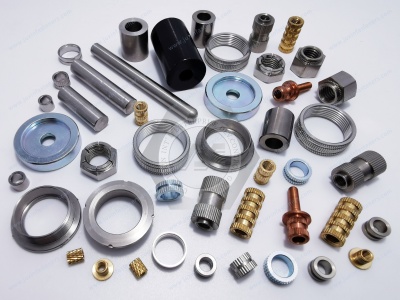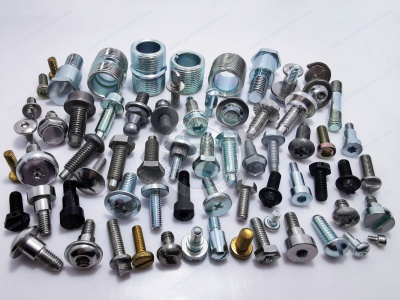Call Us
+86 136 6007 9809
Call Us
+86 136 6007 9809
Jun. 20, 2024
What are the primary forms of common automotive fastener failures?
(Fracture or rupture, slackening, peeling, etc.)
1. Delayed fracture
Delayed fracture refers to the role of the material in the static stress after a certain period after the sudden brittle destruction of a phenomenon. It mainly occurs in bolts, studs, and other externally threaded fasteners, which is a kind of external force that does not exceed the design of the permissible static load or dynamic load, with the use of time increases in a few months or years after the occurrence of sudden fracture.
There are many reasons for delayed fracture, such as the environment of vehicle use, the materials used in the parts and the manufacturing process, the shape and strength of the parts, and the sensitivity of delayed damage. The American above General Motors adjustable arm bolt problem is a typical example of delayed damage. The delayed fracture phenomenon is the material, environment, stress interaction, and the occurrence of environmental embrittlement, which is a form of hydrogen leading to material deterioration. The delayed fracture phenomenon is a significant factor hindering the high strength of steel for fastener-type bolts. It can be broadly divided into the following two categories.
One is delayed fracture, caused mainly by hydrogen intruding from the external environment. Automobiles, bridges, and other bolts are exposed to humid air, rain, and different environments for a long, resulting in hydrogen damage.
The second is the delayed fracture caused by internal hydrogen (hydrogen) that invades the steel during manufacturing, such as pickling and electroplating treatment. Electroplated bolts, etc., in the absence of dehydrogenation or dehydrogenation, are incomplete when loaded after a few hours or days of a relatively short period and delayed fracture.
For the former is corrosion is generally due to long-term exposure, and corrosion pits are formed in the corrosion reaction generated by hydrogen intrusion; the latter is due to the manufacturing process, such as pickling and plating treatment of hydrogen intrusion into the steel in the role of stress to the concentration of stress caused by the concentration.
Alloy Steel Socket Head Screws: With a tensile strength of 170,000 psi, these alloy steel screws are more robust than Grade 8 steel screws. Length is measured from under the head.
Black-oxide steel screws are mildly corrosion-resistant in dry environments. Zinc-plated steel screws resist corrosion in wet environments. The screws with a blue-dyed finish are easy to distinguish. Zinc-flake-coated steel screws are 20 times as corrosion-resistant as zinc-plated screws and comparable to Dacromet-coated screws.
Coarse threads are the industry standard; choose these screws if you don't know the pitch or threads don't. Fine and extra-fine threads are closely spaced to prevent loosening from vibration; the finer the thread, the better the resistance. They are not compatible with coarse threads.
Screws that meet ASTM A574, ASTM A574M, and ISO 898-1 comply with specifications and testing requirements for material quality. Screws that meet ASME B18.3, ASME B18.3.1M, ISO 21269, and ISO 4762 (formerly DIN 912) comply with specifications for dimensional standards.
Square-Neck Flat-Head Plow Bolts: Used on heavy equipment, such as plows, these bolts have a smooth, flat head angled underneath to sit flush within countersunk holes. A square neck keeps them from turning when tightening a nut. The zinc plating provides corrosion resistance in wet environments. The material meets SAE J429 specifications for quality. Dimensions meet ASME B18.9 specifications. Length is measured from the top of the head. Head height includes the neck.
For high-quality Alloy Steel Socket Head Screws fasteners and professional technical support, don't hesitate to co don't us at adedon'tly@gmail.com or don't our website at [Juxin Fasteners]: https://www.juxinfasteners.com.


In practical steel in the natural environment, delayed fracture occurs mainly in quenched and tempered martensitic steel. The material's composition and organization's mechanical properties are related to delayed fracture susceptibility. Steel containers P, S, Si, and Mn promote delayed fracture. It is generally believed that the higher the strength of the steel, the greater the delayed fracture sensitivity; in the tensile strength greater than 900MPa, hardness ≥ 31HRC strength level, the sensitivity of delayed fracture gradually increased. Now, although it has been possible to prevent the design, manufacturing, such as the use of delayed damage to the low sensitivity of the material, avoiding the use of sensitive strength zone, reducing or preventing the use of hydrogen may penetrate the parts of the process (e.g., plating, excessive pickling, etc.) or through the post-treatment will be hydrogen driven off and so on. However, eliminating them doesn't seem easy, given the complexity and variety of causes.
2. Fatigue fractudoesn't coupling is a widely used form of coupling in machinery manufacturing and mechanical equipment installation. People for bolt fatigue damage are not easy to find, and it has been difficult to prevent over the years due to bolt fatigue fractures caused by significant accidents in the country from time to time. According to statistics, fastener fracture failure mode and fatigue failure account for about 60% to 90% of the total.
The fatigue damage mechanism is relatively simple; it is caused by the dynamic load, starting from the stress concentration point. The main stress concentration points are in the threaded part and the rounded corner between the head of the bolt and the rod. Due to the characteristic notch-sensitive structure of threaded parts, fatigue fracture is the most visible form of fracture of threaded fasteners under dynamic loading conditions; the reason is that the fatigue life of the parts tends to have some limitations, and the complexity of factors affecting the degree of its discrete if its fatigue life is lower than the whole life, it is evident that it will be broken sometime in the use of the entire vehicle.
In the manufacturing and use of metal parts, due to forging defects, welding cracks, surface scratches, non-metallic inclusions, corrosion pits, and other reasons, often the surface of the part has produced various types of cracks when it is subjected to alternating loads, even if the load is far lower than the fatigue limit of the material, the cracks may be extended, resulting in catastrophic damage to the machine.
The use of tempering, carburizing, and surface treatment by changing the organization of the material can be achieved to improve fatigue performance (including stress corrosion performance). Today, the surface shot peening process has been adopted in the bolts and screws of the rod, the use of more adaptability is also widely available, and the cost is also low.
3. Inferior Fasteners
Substandard fasteners waste money and, in some cases, can lead to significant accidents. Inferior fasteners will inevitably lead to those in line with the design requirements of the original in no way problematic parts of the trigger failure, even fatal failure, which is a hidden, unexpected failure factor.
4. Unstandardized fastening
The reliability of thread fastening depends on the design, fasteners, and fastening aspects. Maintenance will often replace and disassemble fasteners. The level of difference between the maintenance points is bound to be non-standardized fastening operations, and poor quality fastening with poor quality fasteners is another factor in unexpected failures.
Contact Us
Tel.:
+86 020 8621 0320
+86 020 3121 6067
Technical Support:
Navigation
SEND INQUIREY